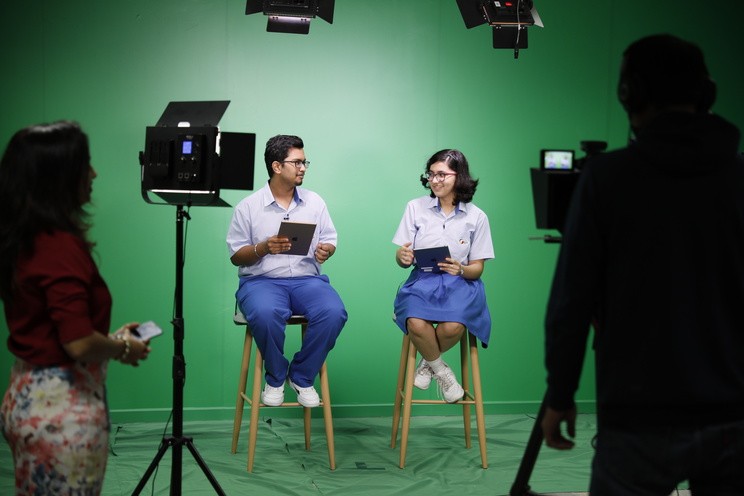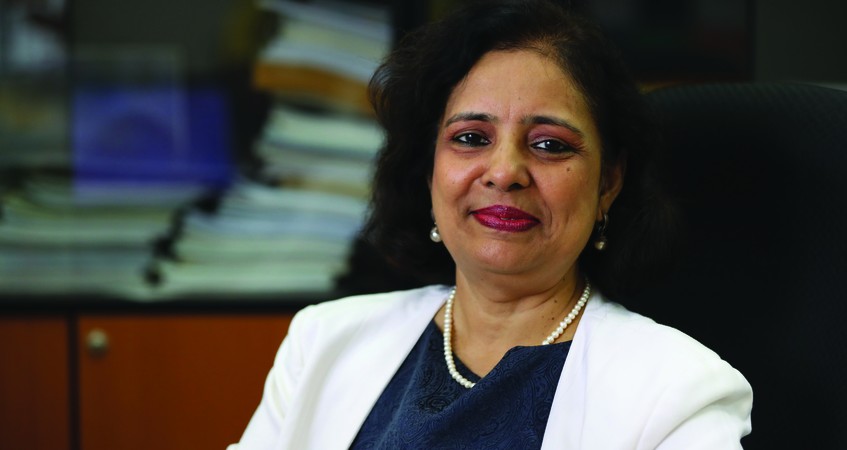For over 25 years, Ms. Melissa Maria, Principal of the Global Indian International School (GIIS) SMART campus in Singapore, has been at the forefront of bringing new ideas and methodologies to education. She has been in educational leadership roles in International schools in Singapore and the Middle East for the last 20+ years.
Recent times have seen many changes to the education landscape. We asked Ms. Melissa Maria about the major changes and trends in education and their impact on students to learn more.
Q: What can you tell us about emerging education trends?
In the last 25 years, there has been a paradigm shift in the education landscape. We've come a long way from the "one size fits all" approach. I feel two things have broken the learning barriers: 1) technology and 2) the pandemic. Both have spawned significant changes and trends in education.
If we were to talk about top education trends that are here to stay, I would list some of the top ones as:
- Personalised learning
- Gamification
- Anywhere, anytime learning
- Skills acquisition
Q: That’s interesting. Can you tell us more?
Personalised learning, crafted for individual needs, is where each student has an independent learning journey. This type of learning is supported by new technology.
For example, let's say a Grade 1 student is learning single digit addition, and then double digit addition, and then moving on to multiplication. Meanwhile, their classmate might need more time on single digit addition. That student is on a different learning journey.
To accommodate this, the teacher can make use of AI tools and personalise instruction for the student so that each child can master their skills before moving on to the next set of learning. For example, every time a student does a worksheet or an activity on an app, an AI-triggered system that is in place, marks the assignment.
If the student hasn't mastered the skills necessary to move on to the next level, the system will throw up more worksheets on the same topic so that they can practice more. Only when they have mastered one concept will they go on to the next concept. So, learning becomes hugely personalised.

Q: What role does gamification play in learning?
Extensive use of technology inside the classroom will lead to broader use of games in learning. Gamification incentivises learning. It works for both primary and secondary students.
For example, there are educational apps like Elevate, where there are games that personalise brain training for students. Students are given multiple worksheets, and they move to the next level only after mastering one level.
Q: So gamification supports personalised learning?
That's correct. To give another example, students may conduct science experiments online, and if they don't get it right, they do it multiple times until they get it right. So the whole idea is you're engaging students by incentivising them. They also get to try and understand different strategies to make their experiment work, which they may not be able to do offline due to time or resource constraints. Gamification prepares them for various types of real-life challenges.
Q: Can you describe what you mean by anytime, anywhere learning?
Many schools are still perfecting this strategy, but moving forward, students may start collecting credentials from outside school on courses that interest them. Technology and access to courses from around the world allow students to learn whenever and wherever they are. In the future, this could even shorten the education journey, which is currently between 12 and 16 years. The journey may shorten when students add these certifications to their portfolios.

Q: How is "skills acquisition" becoming a trend in education?
Universities and employers are now looking for students with a balanced education, students who excel in academics and various other skills. As a result, universities have now stopped looking for perfect scholars.
And therefore, I think, going by this trend, there will be an emphasis on two things: 1) acquiring skills so that one is prepared for the unknown 2) value-based learning, where you introduce classes on mindfulness, heartfulness, meditation etc.
Students, at many international schools in Singapore, including GIIS, are being taught about the relationships between healthy minds and healthy bodies, as well as the importance of personal well-being.
Q: How does GIIS prepare students for a rapidly changing future?
At GIIS, we nurture 21st-century skills like collaboration, creative thinking and communication as part of school life. These skills will help make our students future-ready. This is a part of the skills acquisition I mentioned earlier.
We also provide holistic learning through the 9GEMS framework, where students build their academic foundation while exploring sports, visual and performing arts, developing entrepreneurship and leadership skills, reinforcing universal values and ethics, getting involved in community care and so on. We also incorporate technology and skills-based labs in school to foster innovative learning and thinking in students.
Want to know more about international schools in Singapore and GIIS?
If you would like to know more about the different curricula offered for international school students in Singapore and how students are prepared for the future, we’d be happy to help you out. Please do get in touch with our friendly admissions team.




